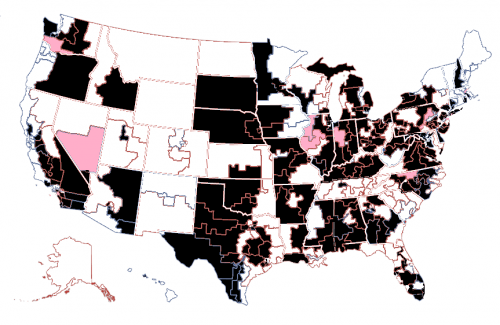Mapping the Vote to Limit the NSA via Amash-Conyers Amendment
- OurStudio

- Jul 25, 2013
- 2 min read

Over at Conservative Intel, David Freddoso has mapped yesterday's vote by district on legislation sponsored by Reps. Justin Amash (R-Mich.) and John Conyers (D-Mich.). "Aye" votes would have limited the NSA's ability to collect data on Americans in America. Those votes are coded white, "Nay" votes are black, and non-votes are pink.
From the writeup:
In Wisconsin, just two members voted against — Republican Paul Ryan and Democrat Ron Kind. Colorado's entire bipartisan delegation supported it (it was cosponsored by their Democratic colleague, Jared Polis). In Tennessee, all members voted to limit NSA spying except one — Democrat Jim Cooper. In neighboring Alabama, whose congressional delegation is also dominated by Republicans, the only Democrat voted no along with all Republicans but one. Another thing that should impress you if you know a bit about members of Congress is how there aren't too many common threads. The issue split each party down the middle, split members of the Black and Hispanic caucuses, and pitted both conservatives and liberals against one another. The vote is also likely to spur more conversations during primaries in the 2014 election cycle. For example, in Georgia, Reps. Phil Gingrey, Paul Broun and Jack Kingston are all running for Senate next year. Gingrey voted against the amendment, whereas Kingston and Broun voted for it.
Freddoso is giving the GOP too much credit here. The final vote count was 205-217, with 94 Republicans and 111 Democrats voting for the amendment to limit the NSA. A majority of GOP members—134 all told—voted against the amendment and were joined by 83 Democrats.
But still the map is fascinating and Freddoso's large point regarding a lack of "common threads" explaining the vote patterns is well-taken.
For comparison, he includes a map of congressional districts by party affiliation, with red meaning Republican and blue meaning Democratic:





Comments